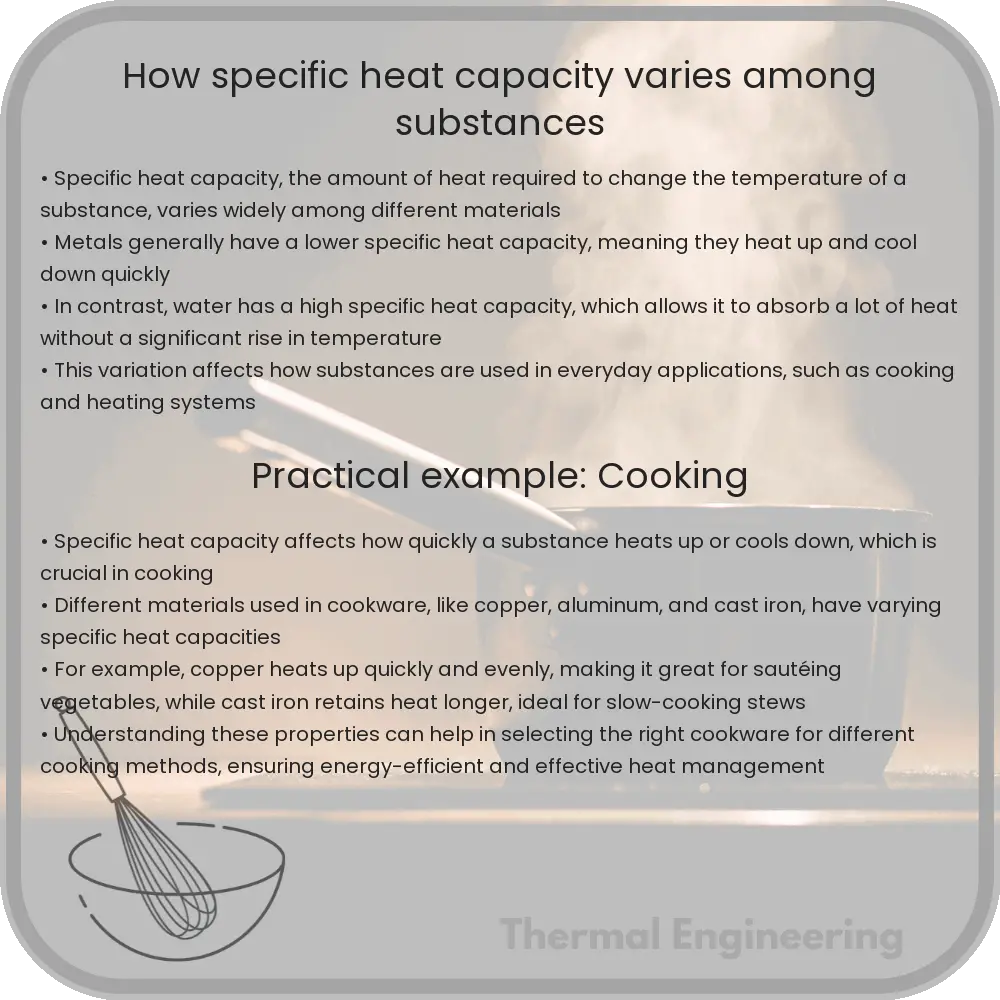Learn about specific heat capacity variations among materials, their impact on engineering, and how they influence the design of heating and cooling systems.

Understanding How Specific Heat Capacity Varies Among Substances
Specific heat capacity is a fundamental physical property that tells us how much heat energy is required to raise the temperature of a unit mass of a substance by one degree Celsius (or one Kelvin). This property is crucial in fields ranging from materials science to mechanical engineering and environmental studies. The specific heat capacity of a substance can greatly influence engineering decisions and the design of heating and cooling systems.
The value of specific heat capacity varies significantly among different materials. This variation depends on several factors including the material’s molecular structure and its state (solid, liquid, or gas). Understanding these differences is key to making informed choices in material selection and system design in engineering processes.
Factors Affecting Specific Heat Capacity
- Molecular Structure: The way atoms and molecules are arranged in a material determines how they absorb heat. More complex molecular structures with larger atoms or more degrees of freedom typically have higher specific heat capacities because they can store more energy.
- Phase of the Material: Generally, gases have higher specific heat capacities than liquids and solids. This is because gases require more energy to increase their temperature due to their higher freedom of movement and lower density.
- Electron Configuration: Materials with more free electrons (such as metals) usually have lower specific heat capacities because these electrons contribute to heat transfer more efficiently than the atomic lattice.
Comparative Examples of Specific Heat Capacities
To illustrate how specific heat capacities can vary, here are a few examples:
- Water: Water has a high specific heat capacity at approximately 4.18 J/g·K. This is why water is an effective coolant and why it plays a critical role in climate regulation.
- Iron: Iron has a specific heat capacity of about 0.45 J/g·K, much lower than that of water, making it quicker to heat up and cool down, which is beneficial in applications like forging and manufacturing.
- Air: Dry air has a specific heat capacity around 1.01 J/g·K at constant pressure, which influences how heating and cooling systems are designed for buildings and vehicles.
Understanding the specific heat capacity of materials helps engineers design more efficient systems for heating and cooling, among other applications. Materials with high specific heat capacities are chosen for tasks that require heat absorption and retention (like thermal energy storage systems), whereas materials with low specific heat capacities are useful where quick temperature changes are desirable.
Applications in Engineering
Specific heat capacity directly impacts several engineering applications, such as:
- Thermal Management: In systems where temperature control is critical, such as in building HVAC systems or in vehicle engine management, materials with appropriate specific heat capacities are essential.
- Manufacturing Processes: The heating and cooling rates of materials affect the energy efficiency and quality of manufacturing processes like casting, welding, and molding.
- Energy Storage Systems: High specific heat capacities are advantageous in systems designed to store thermal energy, such as in solar power plants or during the nighttime storage of excess heat in district heating systems.
In conclusion, the specific heat capacity is a key material characteristic that varies widely between substances. Engineers must understand and consider these variations when designing and implementing systems that involve heat and temperature control. The choice of material based on specific heat capacities can lead to more energy-efficient and effective engineering solutions.